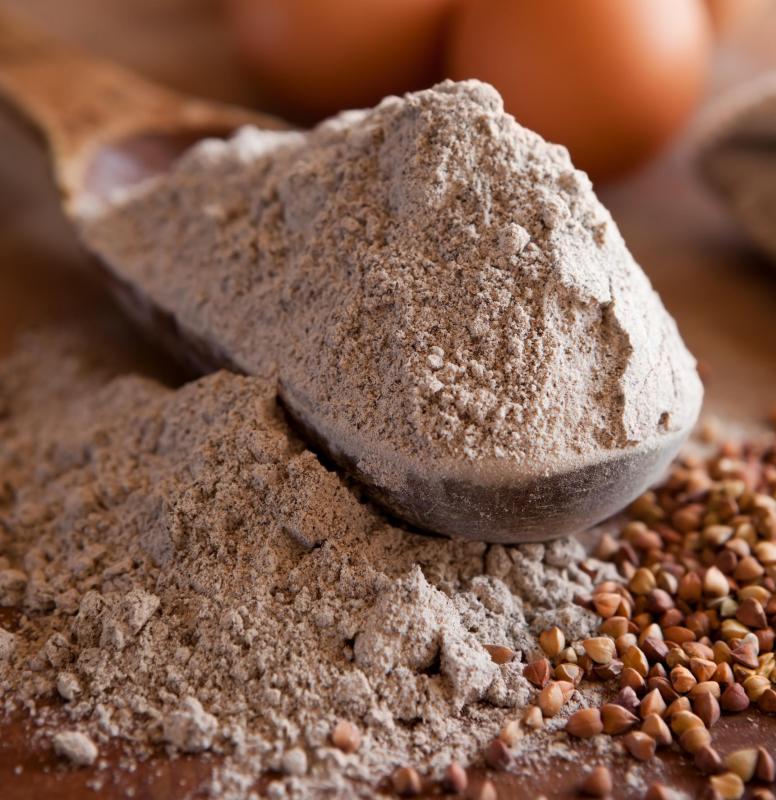At WiseGEEK, we're committed to delivering accurate, trustworthy information. Our expert-authored content is rigorously fact-checked and sourced from credible authorities. Discover how we uphold the highest standards in providing you with reliable knowledge.
What Is Buckwheat Kasha?
Buckwheat kasha is a whole grain buckwheat groat, or hulled seed, that usually has been toasted. Traditionally, the groats, or kasha, is cooked with water and served as a hot breakfast cereal or porridge. Kasha also is used in baking and cooking and can be used in place of rice or pasta. Buckwheat kasha is gluten-free, making it a safe alternative for those with wheat or gluten allergies as long as it has not been mixed with other ingredients. Purchased buckwheat kasha also can be ground in a coffee grinder or small grain grinder to make fresh buckwheat flour.
Native to Northern Europe and Asia since at least the 13th century, buckwheat only expanded to the United States in the 17th century. While many people believe it is a grain and it is used as such, buckwheat kasha is actually related to rhubarb and sorrel. The buckwheat plant is an herb and the triangular fruit seeds, or groats, are hulled and roasted to create what is known as kasha. Buckwheat kasha is high in fiber, protein and complex carbohydrates. Just 1 cup (250 ml) of cooked kasha provides 5.6 grams of protein and 4.5 grams of fiber.

Buckwheat kasha is simple to cook and expands to double its original size when cooked. It is cooked by adding one part kasha to two parts boiling water and simmering it until the water is absorbed and the buckwheat is tender. The cooked kasha is served hot with fruit, milk or honey as porridge or seasoned with herbs and spices in place of rice. It also can be chilled for later use in soup, stew, chili and baked goods such as cakes and muffins, adding flavor and texture to the dish. Cooked kasha can be made into a pudding similar to rice pudding or shaped into balls or patties for vegetarian meatballs and burgers.

Raw buckwheat groats can be toasted at home in a frying pan over low heat rather than purchasing factory-toasted kasha. The uncooked kasha can be ground at home into buckwheat flour and used to make buckwheat pancakes, waffles, muffins, scones, crepes and other gluten-free products. Freshly ground kasha should be used as soon as possible but may be stored in the refrigerator or freezer for up to two months. Raw kasha and groats also should be stored in the refrigerator or freezer prior to cooking to maintain freshness and can be stored for up to six months.
AS FEATURED ON:
AS FEATURED ON:













Discuss this Article
Post your comments